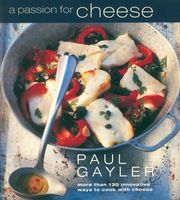Label
All
0
Clear all filters
🔥 Try our grilling cookbooks and save 25% on ckbk membership with code BBQ25 🔥
How Cheese is Made
Appears in
By Paul Gayler
Published 1997
Cheese could be described as an inspired collaboration between Man and Nature. Part of my fascination with it stems from the astonishing diversity that is created out of a single product - milk. Consider the sheer scope and variety of the world’s cheeses. Then consider that they all are made from milk - many from cow’s milk but some from the milk of goats, sheep, water buffalo and even, in some remote areas, donkeys and horses.
The magical property of milk that enables us to turn it into cheese is its ability to curdle. This is said to have been discovered accidentally by Arab nomads many centuries ago, when a bag of ewe’s milk was cut open to reveal a curd-like substance. The heat from the sun had turned the milk sour, causing it to coagulate. Nowadays, most cheese is made from milk that has been pasteurized, that is heated to 72°C (162°F) for just 15 seconds and then cooled rapidly to 31°C (88°F). This destroys the bacteria that cause the milk to sour and curdle, so rennet has to be added to induce coagulation.
Part of
Advertisement
Related Recipes
-
-
-
-
Related Reference
-
-
-
-
Advertisement
The licensor does not allow printing of this title



